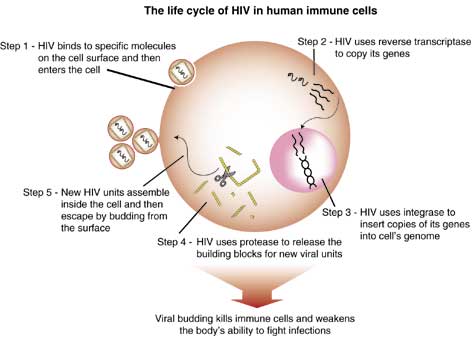HIV LIFECYCLE
HIV,
the virus that causes AIDS, is passed from one person to another
through
A mother
can also pass HIV to her new baby. The virus travels through the bloodstream
to many different places in the body.
The immune system, which helps the body fight off illness, fights back in three ways: with...
|
a) ...custom-made
|
b) ... which eat up all foreign invaders,
|
c) which seek out and destroy cells that are already infected with the virus. |

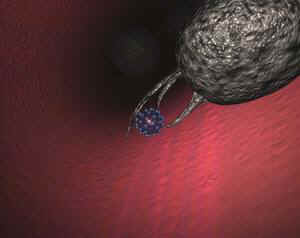
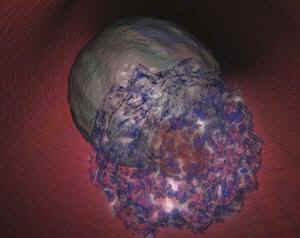
This defense is coordinated by these -- the But HIV has an ingenious battle strategy: it attacks the T cells themselves, crippling the body's defenses.

Infected helper T-cells (foreground)
Here's how it works: HIV has a special shape on its surface which, like a piece of a jigsaw puzzle, fits perfectly into a shape on the T cell. This shape is a protein called . The virus can now enter and infect the cell.

AIDS virus attaching to a CD4 receptor on a helper T-cell
The virus's genetic information -- called -- is transcribed into a form that is identical to the cell's genetic information -- called DNA. The virus, now in the form of DNA, hides out inside the nucleus of the cell, escaping from the body's defenses.
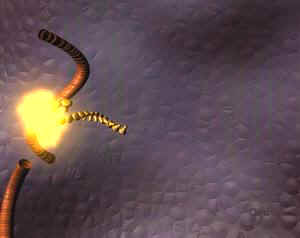
HIV RNA being transcribed to DNA
After a while, HIV comes out of hiding and begins to

The DNA is transcribed into many copies of RNA, which produce proteins for the new viruses.
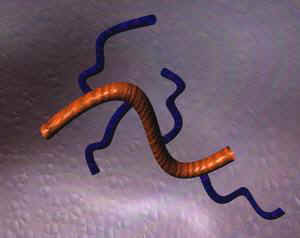
The proteins are cut into usable pieces and with the RNA
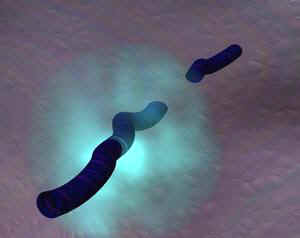
The new viruses then bud from the cell. Each new virus may then go on to infect and , weakening the immune system's defense.
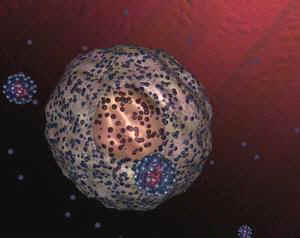
Infected T-cell budding new viruses
After a lot of T cells are destroyed, the person is said to have AIDS. A person with AIDS will probably develop one or many infections -- diseases that make people sick only when their immune systems are weakened. A person with AIDS will usually die of these opportunistic infections.
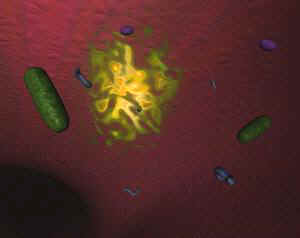
Opportunistic infections in the bloodstream of a person with AIDS
SUMMARY
